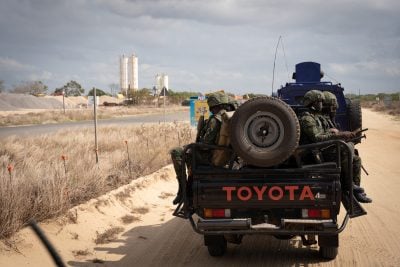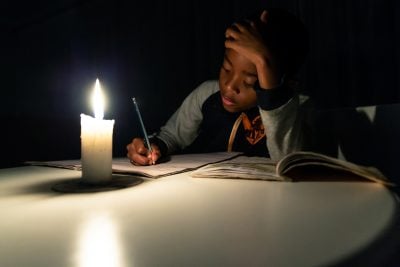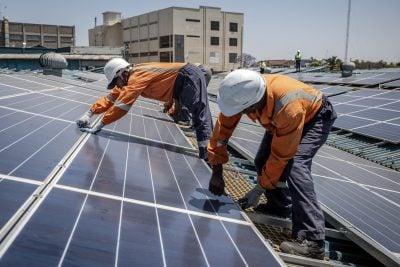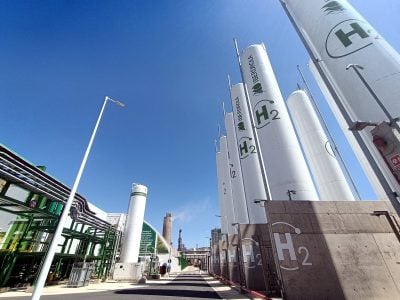Le Fromager, French for “the cheesemaker”, is a tree named after its soft wood, which is used in the manufacturing of cheese boxes. The tree is one of the tallest in Gabon’s rainforests, and is also considered one of the most sacred. Spanning up to 65 metres tall, the trees are considered by some Gabonese tribes as a conduit between the living and the spiritual world.
The spiritual discipline of Bwiti combines worship of ancient forest spirits with elements of Christianity. In some villages, people are buried at the foot of the tree to ensure their passage into the afterlife. When a woman gives birth to twins, seeds of the tree are planted in the front and back of her house, so that the cheesemaker can grow and flourish.
The cheesemaker is just one species of tree that makes up Gabon’s tropical rainforest, which is one of the most biodiverse in the world. It covers 88% of Gabon’s landmass, and makes up part of the Congo Basin. The basin is arguably the world’s most important carbon sink, after it was announced in July that the Amazon is now emitting more CO2 than it is absorbing.
Carbon counting
Vincent Medjibe is on a mission to measure Gabon’s forests tree by tree to measure how much carbon they can capture. Medjibe is the managing coordinator of the Natural Resources Inventory Project (NRI) in charge of carbon accounting at the national scale in Gabon, which helps guide the government’s national development plan.
“The goal is to set up a network of 500 permanent plots across the country and the size of each permanent plot is one hectare, 100 metres by 100 metres,” Medjibe tells African Business. His team measures each tree and records the different species in each plot. On average, a plot has 300 different tree species in it. The diameter and height of each tree is measured, and from that Medjibe can calculate the total weight and the carbon each tree can sequester.
“The carbon that is in the tree varies from species to species,” he says. “The wood density is really the parameter that explains that variability in terms of carbon in each individual tree.”
The national project, which started in 2012, will help Medjibe’s team know roughly how much carbon Gabon’s rainforest can absorb from the atmosphere per hectare per year. As well as data on emissions factors, Gabon has data on above and below-ground biomass, soil carbon and coarse woody debris, Medjibe says.
“This is why Gabon really provides a good example that other countries in Central Africa, and even across the world, can use. To my knowledge, it’s the first country in Africa to have a network of permanent forest plots,” he says.
Medjibe has been working with the African Conservation Development Group (ACDG), a private sector operator that focuses on conversation-led development, eco-tourism and green financing. They are working with Gabon’s government to develop the country’s carbon pricing system.
Grande Mayumba
ACDG is also working on a number of conservation and development projects. It holds long-term rights to sustainably develop 731,000 hectares of forest and savannah in Nyanga Province, southern Gabon.
The project, known as Grande Mayumba, will conform to Gabon’s sustainable development law. It will see more than $160m invested in commercial activities and infrastructure in the area, and is expected to create between 2,400 and 4,000 jobs, according to Josh Ponte, ACDG’s creative director.
At least 700 of these will be in forestry, and there will also be employment across fields including agriculture, infrastructure and tourism. ACDG is looking to transform the region with an urban infrastructure plan with a small industrial zone, and an aggregate quarry.
After ACDG secures rights to develop land, it analyses the landscape using a combination of in-house and external experts, including academics from the London School of Economics (LSE) and the University of Sterling. After it has determined a sustainable development plan, it raises capital and begins developing the landscape in a way designed to minimise its carbon emissions, Ponte says.
Gabon has limited annual deforestation to less than 0.1% over the last three decades, and it has mainly been able to do this because of oil revenues supporting the economy. Development typically causes environmental degradation and raises emissions, but Ponte says ACDG’s projects are focused on conserving the environment and lowering emissions.
Current stored carbon in the Grande Mayumba has been measured at 435m tonnes, and ACDG says its integrated land use plan will save 85m tonnes of CO2 over 10 years and 200m tonnes over 25 years. By 2030, the agribusiness from the project is predicted to produce 1,000 head of cattle and 228,000 tonnes of sugar, which can also be used to make biomass to turn into green energy. ACDG is also looking at using hydropower to help power its agribusiness, Ponte says.
“This is optimised multi-industrial land use, with a social development component, all tested against the [UN] SDGs [sustainable development goals],” Ponte says, adding that it also uses other metrics to determine whether the project benefits the local community as well as the environment.

Eco-lodge with an academic spin
ACDG is also working on what Ponte believes is the first luxury eco-lodge embedded into a scientific research station. ACDG looks to merge ecotourism with “an interactive museum” in Loango National Park in Western Gabon. It is one of the most biodiverse regions of the country, and home to animals including buffalo, elephants, hippos, and olive ridley sea turtles and humpback whales off the coast.
It will be the first of a planned network of lodges the organisation intends to establish in Gabon’s national parks. Ponte says that at Petit Loango, there will be an “interface space between the tourists and the scientists”.
“So you would go to the bar, and you’ll end up sitting with the guy who is actually studying the local humpback whales or changes to carbon in the forest landscape,” Ponte says. The pandemic has posed challenges. Ponte says ACDG is doing some research on the tourism market before deciding when to go ahead with the development.
“We think, in real terms, it should open by the end of 2023. We had it earmarked to open at the end of 2021, but we think there’s no need to push it at that rate. We’ve done the whole of the back of house, so it’s the front-of-house building that needs to go on. It’s probably a year’s job. We can trigger it at any time.”
There will be 20 rooms at the lodge, made with timber that is sustainably sourced, Ponte says.
Carbon bonds
ACDG funds these projects through a number of sources, including sovereign wealth fund investment and bond issuances. But it has also been developing green finance structures, such as carbon credits, for which Ponte says there is a “huge appetite”.
“We’ve worked very, very hard to put together financial instruments that have a carbon component that makes sense in the market. And we are strongly of the belief that one of those will come to pass over the next short period of time,” he says.
With the data to monitor carbon sequestration and potentially make conservation profitable, Medjibe says other nations could learn from Gabon’s approach to its forests. But he acknowledges that if Gabon fails to tread the fine line between development and conservation, it could come at a great cost.
“It’s a big deal for us because if we make just a small mistake then what is happening in the Amazon will happen right here.”
Want to continue reading? Subscribe today.
You've read all your free articles for this month! Subscribe now to enjoy full access to our content.
Digital Monthly
£8.00 / month
Receive full unlimited access to our articles, opinions, podcasts and more.
Digital Yearly
£70.00 / year
Our best value offer - save £26 and gain access to all of our digital content for an entire year!
 Sign in with Google
Sign in with Google 



